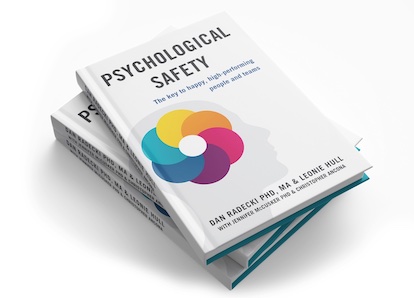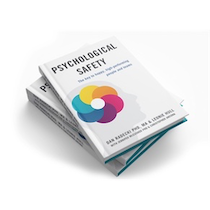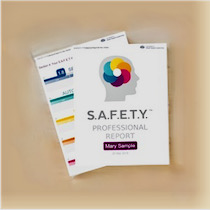In the fast-paced and often stressful environment of modern workplaces, learning how to deal with emotional triggers at work is essential. Triggers occur when there is a violation to your psychological safety, causing the pre-frontal cortex—the higher brain responsible for complex thinking and decision-making—to be overridden by the older, more primitive brain.
Triggers can be anything from a critical email to an unexpected change in plans, causing strong emotional responses that impact our productivity and well-being. Trigger management involves getting the pre-frontal cortex back into the drivers seat to lessen the impact the trigger is having. Understanding what happens when we get triggered and how to manage these reactions is crucial for building personal resilience, navigating workplace relationships and increasing our overall happiness & performance at work.
4 Effective Strategies to Deal with Emotional Triggers at Work
1. Label What’s Going On for You
When a trigger occurs, a good first step is to ‘label’ the emotion being experienced. Neuroscience research shows that naming emotions can help calm the brain’s emotional centers by creating distance between you and the emotion. This shift allows for viewing the emotion as an experience rather than an identity.
For instance, if you receive an email criticizing your work, instead of reacting immediately, take a moment to acknowledge the feelings: “The emotions I’m experiencing are anger, upset, and frustration.”
This simple act can significantly reduce the emotional charge and allow a more rational response. Remember, it’s important to label the emotion rather than identify with it (e.g., say “I’m feeling angry” instead of “I am angry”).
There’s a great video by psychiatrist and mindfulness expert Dan Siegel called ‘Name It To Tame It’ that explains this concept in more detail.
2. Look at Things from Their Perspective
Quite often, our emotional triggers stem from taking things too personally. Shifting perspective to understand the other person’s viewpoint can be incredibly beneficial. Sometimes this can be hard in the moment, but by recognizing that “it’s not them, it’s their brain”, it can help depersonalize situations and reduce emotional responses.
Neuroscience tells us that when adopting a first-person perspective of someone else’s mindset, especially in written form, a different part of the brain is engaged, aiding in processing the situation more effectively.
Questions like, “What might this situation tell me about their fears and needs?” or “What could be going on for them right now?” can provide valuable insights, especially when the person’s traits or behaviors are particularly grating. It’s important to remember that they’re not wrong, they’re just different.
By empathizing with others, the intensity of emotional responses can be dampened down, allowing for a more understanding and compassionate approach to the situation.
3. Reappraise What’s Going On
Reappraisal is ‘rewriting the story’. It is consciously putting aside the negative interpretation that caused your trigger response and seeking other neutral or positive interpretations that may challenge your assumptions, beliefs and attitudes.
Consider what you can learn from the situation or how it might benefit you. For example, many people were triggered by the return to the workplace after COVID-19, feeling that their need for autonomy was being compromised.
By reappraising this situation to see the benefits of returning to the office—such as increased collaboration and the chance to strengthen team relationships—you can mitigate the negative emotional response. If autonomy is your trigger, look for ways to regain a sense of control, such as negotiating flexible start and finish times or negotiating a hybrid working agreement.
4. Understand Your Own Psychological Safety Needs
The S.A.F.E.T.Y.™ Model, developed by the Academy of Brain-based Leadership (ABL), identifies six domains of psychological safety: Security, Autonomy, Fairness, Esteem, Trust, and You. Understanding your own needs in these areas can help you navigate triggers more effectively.
ABL offers a free self-assessment that can provide insight into your psychological safety needs. By recognizing which domains are most relevant to you, you can take proactive steps to address and manage your triggers.
Conclusion
When building psychological safety in teams and learning how to deal with emotional triggers at work, it is important to establish an agreed process for raising and working through our triggers. ABL’s T.R.A.I.N. process provides the neuroscience based strategies to catch, manage and communicate our triggers safely and effectively.
To learn more about the brain-based approach to building psychological safety and managing triggers read “Psychological Safety – the Key to Happy, High-Performing People and Teams”.
Or, if you’re interested in learning more about your psychological needs, complete our free S.A.F.E.T.Y.™ Self-Assessment to learn your top domain and consider upgrading your report and debriefing with a coach.
And, if you are a manager, leader, coach, consultant, or trainer, our Psychological Safety Accreditation Program can further enhance your ability to create a safe and thriving workplace.













